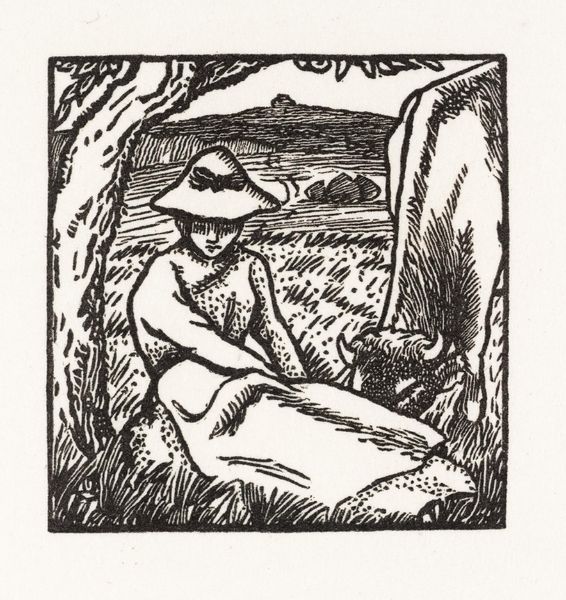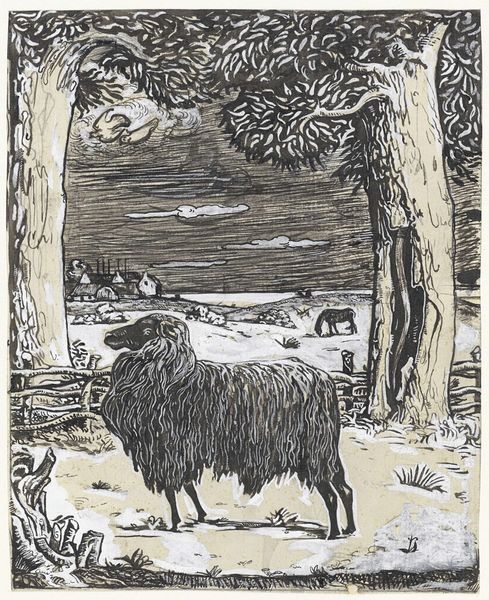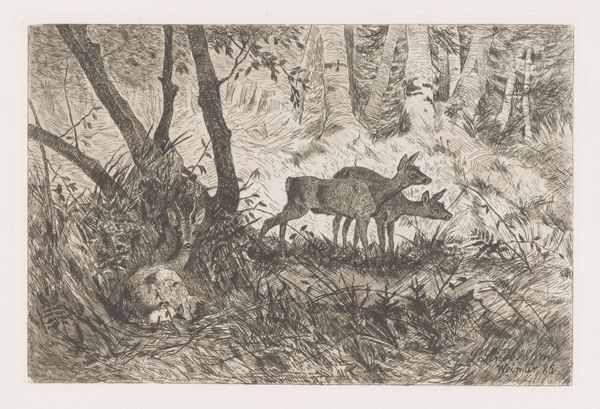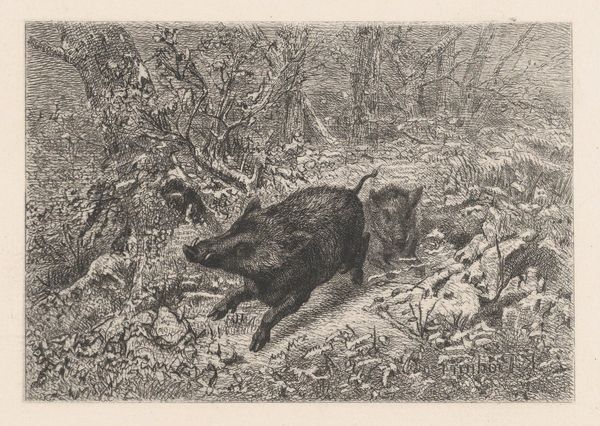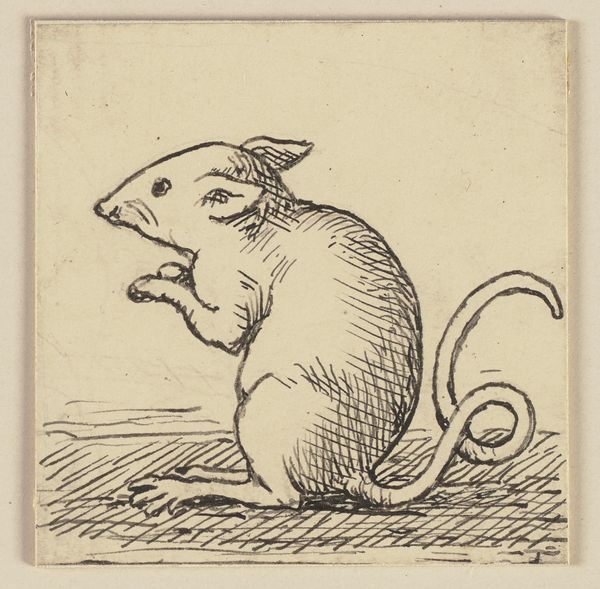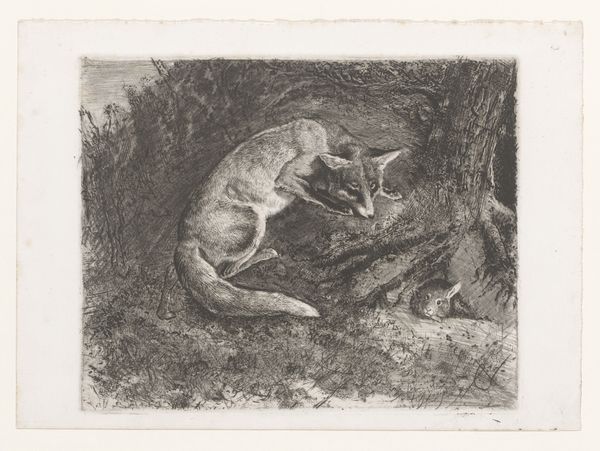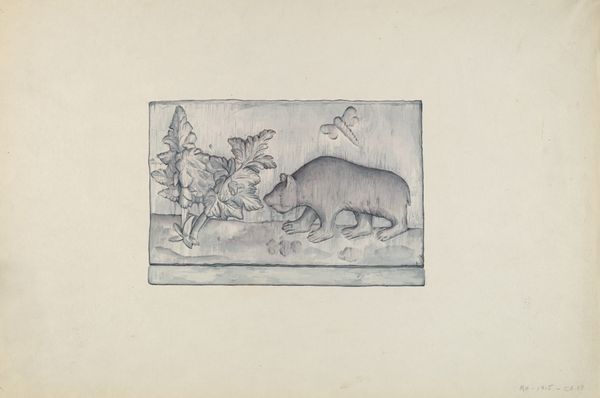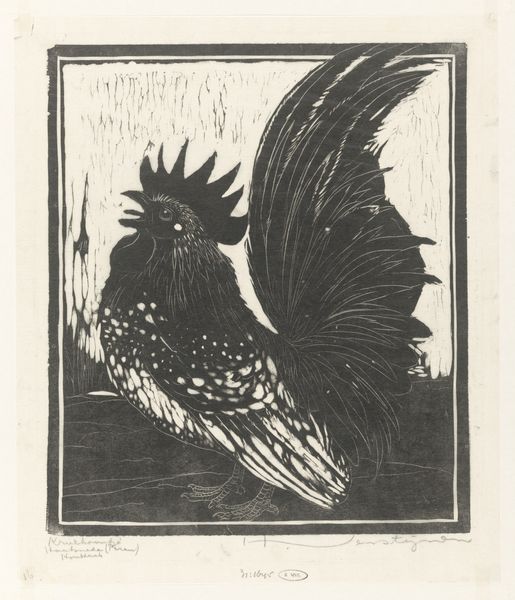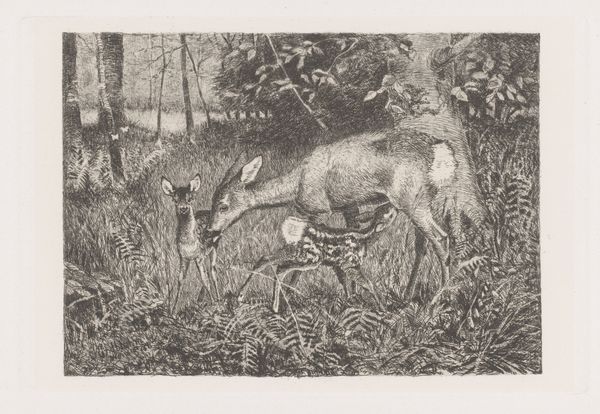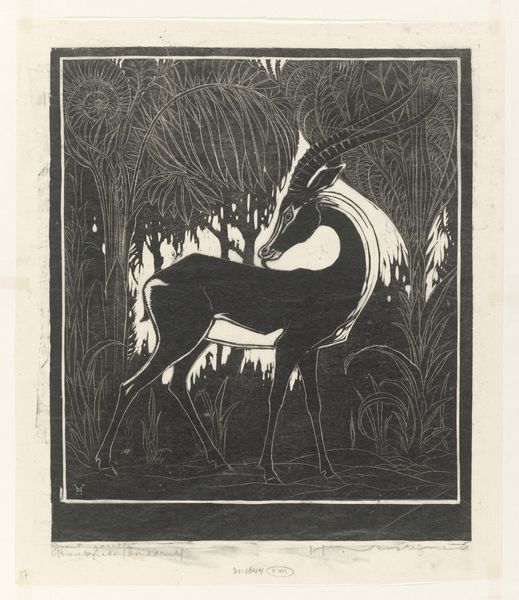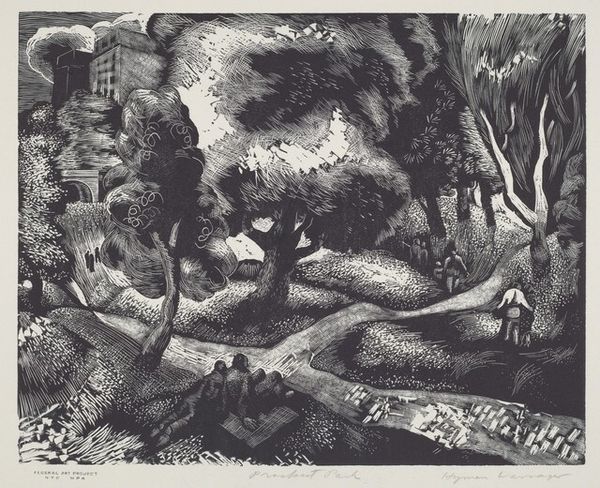
drawing, ink, pencil
#
drawing
#
pen drawing
#
landscape
#
figuration
#
ink
#
pencil
#
line
Copyright: Public Domain
Editor: Here we have Hans Thoma's "Drawing for the primer_ Hedgehog," created around 1905 using pencil and ink. The drawing presents a hedgehog nestled among foliage and a single flower. I'm struck by its simplicity, a contrast between the intricate texture of the hedgehog and the linear quality of the plant life around it. How do you interpret this work? Curator: Thoma was deeply involved in the cultural milieu of early 20th-century Germany, a period grappling with rapid industrialization and a longing for an idealized, pre-industrial past. His focus on natural subjects like this hedgehog can be seen as a reflection of that sentiment, part of a broader artistic movement idealizing the rural and the innocent. Do you see any evidence of how this reflects the emerging national identity? Editor: Perhaps in the depiction of the animal. The hedgehog appears so distinctly, well, German! It feels emblematic, less like a scientific study and more like a symbol. Curator: Precisely. The placement of this drawing in a primer also informs its socio-political role. Educational materials at the time played a significant role in shaping young minds and instilling national values. So, the presence of the hedgehog serves not just as a simple animal study but as part of a broader narrative connecting childhood, nature, and nation. Why do you think Thoma adopted line art? Editor: Considering the educational purpose, the starkness and clarity of the lines must have aided easy printing, mass distribution, and clarity. Looking closer, I'm beginning to see how something that appears so straightforward can carry a heavy weight of cultural meaning. Curator: Exactly. It’s fascinating to consider the humble hedgehog as a vehicle for cultural values and identity formation, something I hadn’t fully considered before our conversation. Thanks for your insight.
Comments
No comments
Be the first to comment and join the conversation on the ultimate creative platform.
